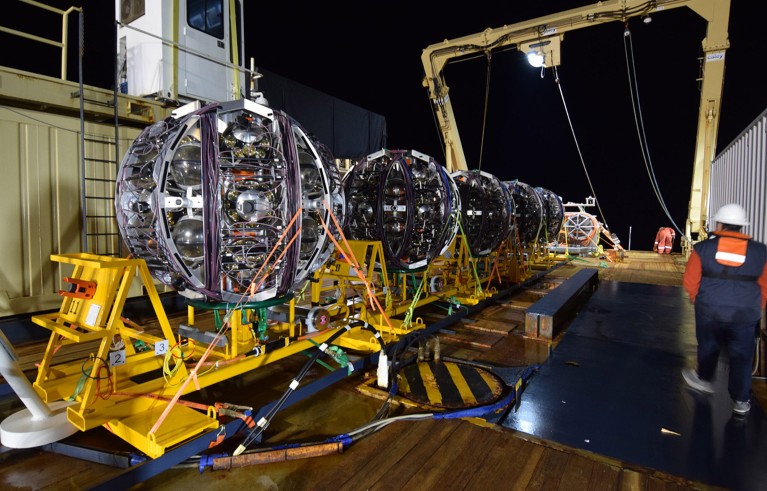- Courses
- GS Full Course 1 Year
- GS Full Course 2 Year
- GS Full Course 3 Year
- GS Full Course Till Selection
- Answer Alpha: Mains 2025 Mentorship
- MEP (Mains Enrichment Programme) Data, Facts
- Essay Target – 150+ Marks
- Online Program
- GS Recorded Course
- Polity
- Geography
- Economy
- Ancient, Medieval and Art & Culture AMAC
- Modern India, Post Independence & World History
- Environment
- Governance
- Science & Technology
- International Relations and Internal Security
- Disaster Management
- Ethics
- NCERT Current Affairs
- Indian Society and Social Issue
- NCERT- Science and Technology
- NCERT - Geography
- NCERT - Ancient History
- NCERT- World History
- NCERT Modern History
- CSAT
- 5 LAYERED ARJUNA Mentorship
- Public Administration Optional
- ABOUT US
- OUR TOPPERS
- TEST SERIES
- FREE STUDY MATERIAL
- VIDEOS
- CONTACT US
EAST: China’s Artificial Sun
EAST: China’s Artificial Sun
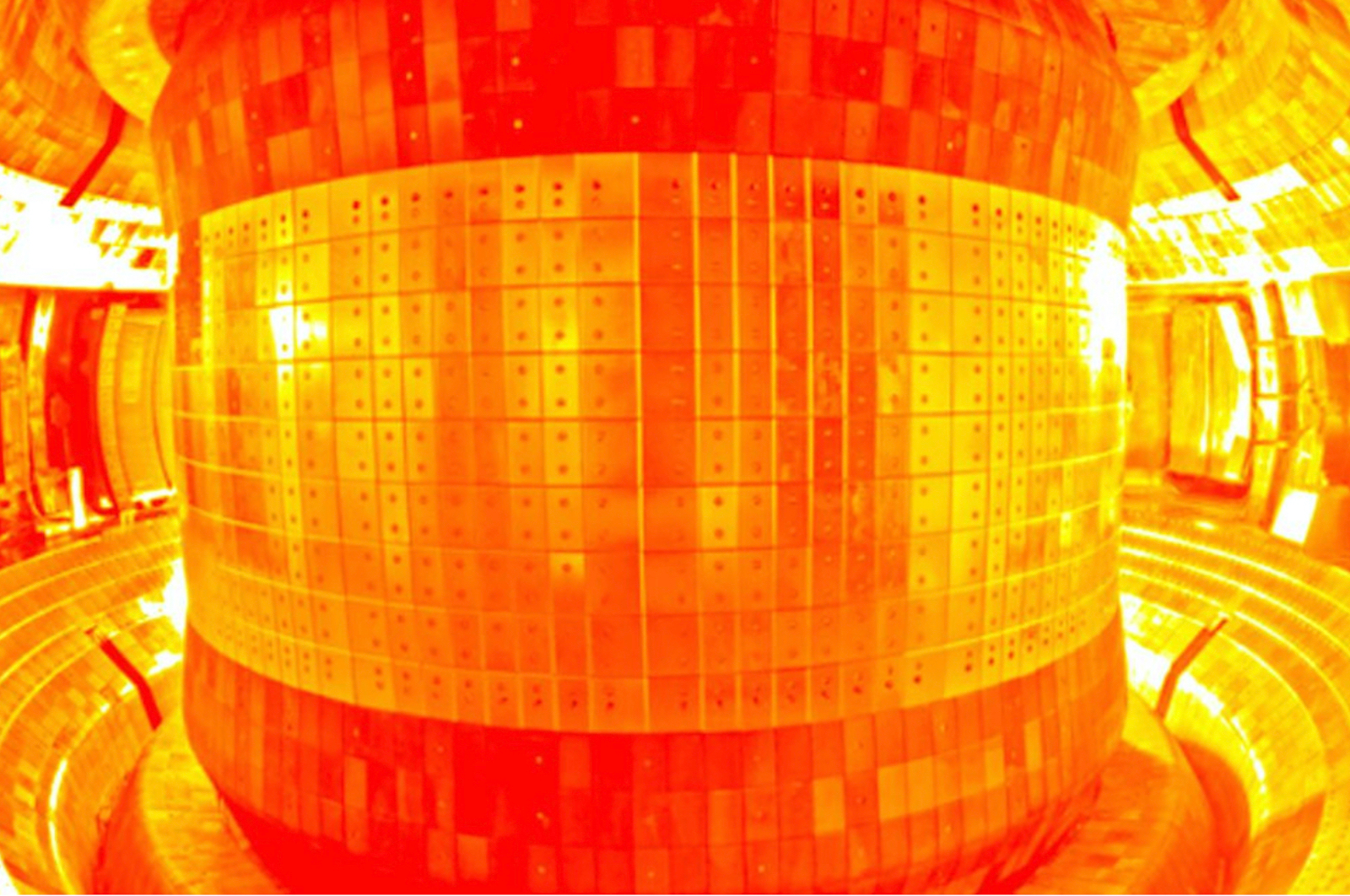
- The Experimental Advanced Superconducting Tokamak (EAST), known as China’s “artificial sun,” has made significant strides in nuclear fusion research.
- In January 2025, the EAST reactor achieved a major milestone by maintaining steady-state high-confinement plasma operation for over 1,066 seconds (about 17 minutes), setting a new world record.
- This achievement surpassed its previous record of 403 seconds, set in 2023.
Key Achievements of EAST
- Temperature Achievement: During the 2025 operation, EAST reached a temperature of 100 million degrees Celsius, a necessary condition for nuclear fusion.
- However, EAST has not yet conducted fusion reactions or produced electricity. It is focused on sustaining plasma confinement for extended periods, a critical step towards building operational fusion reactors.
- International Collaboration: Since its operation began in 2006, EAST has served as an open test platform for both Chinese and international scientists, allowing them to conduct fusion-related experiments and research.
- The next goal for fusion reactors is to maintain these extreme conditions for days at a time, which is essential for generating electricity.
Background and History of Nuclear Fusion Research
- What is Nuclear Fusion?
- Nuclear fusion is the process in which two or more light atomic nuclei combine to form a heavier nucleus, releasing large amounts of energy in the process.
- This is the same reaction that powers the Sun and other stars in the universe.
- To initiate fusion, the atomic nuclei must be heated to extremely high temperatures and pressures to overcome their natural repulsion.
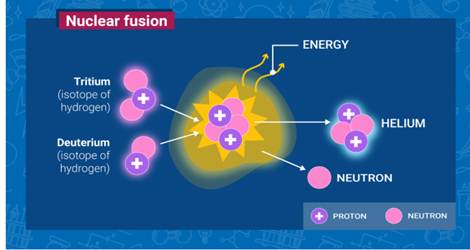
- The Beginning of Fusion Research
- The concept of nuclear fusion has intrigued scientists for centuries, but practical efforts began in the mid-20th century.
- In the 1930s, British physicist Mark Oliphant discovered the fusion of deuterium (a hydrogen isotope), leading to the realization that nuclear fusion could potentially serve as a significant energy source.
Key Milestones in Fusion Research
- 1950s–1960s: Early research on nuclear fusion focused on two primary methods: magnetic confinement (using magnetic fields to trap plasma) and inertial confinement (using lasers or other techniques to compress plasma).
- 1954: Soviet physicists Igor Tamm and Andrei Sakharov proposed the Tokamak, which would later become one of the most important breakthroughs in fusion research.
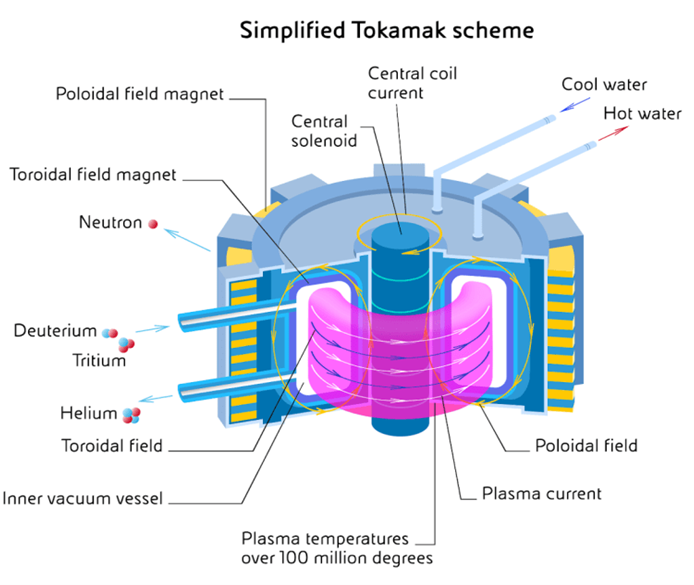
- 1970s: The first experimental fusion reactors using Tokamak technology were developed. The Soviet Union's T-3 Tokamak made significant progress during this time.
- 1980s: The Joint European Torus (JET) in the UK and ITER (International Thermonuclear Experimental Reactor) were launched as part of global efforts to demonstrate that nuclear fusion could be used as an energy source.
How Does Fusion Work in an Artificial Sun?
- In a fusion reaction, light atomic nuclei merge to form a heavier nucleus, releasing energy because the total mass of the resulting nucleus is less than the mass of the original nuclei. The leftover mass is converted into energy.
- Hydrogen isotopes (deuterium and tritium) are used to create a plasma state, where the ions and electrons are separated.
- The plasma is heated to extremely high temperatures to achieve the conditions necessary for nuclear fusion.
- Achieving stable operation at high efficiency for thousands of seconds is critical for future fusion reactors, as continuous power generation depends on maintaining the self-sustaining circulation of plasma.
Advantages of Fusion Reactors
- Abundant Fuel: Fusion reactors use hydrogen, which is abundant in water from oceans, providing a nearly limitless fuel supply.
- Clean Energy: Fusion is a clean energy source that produces no carbon dioxide.
- Minimal Nuclear Waste: Fusion generates minimal nuclear waste compared to conventional fission reactors.
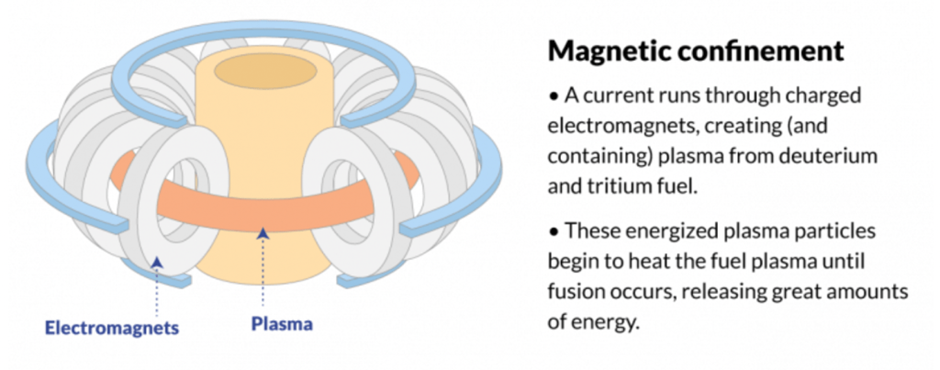
What is a Tokamak
- "Tokamak" is an acronym derived from Russian terminology.
- The acronym comes from "тороидальная камера с магнитными катушками." (toroidal'naya kamera s magnitnymi katushkami).
- In English, this translates to "toroidal chamber with magnetic coils."
- The name describes the device's design which consist of doughnut shaped toroidal chamber with magnetic fields for confining and controlling high energy plasma for nuclear fusions .
- Fusion reactions require extremely high temperatures (hundreds of millions of degrees Celsius), higher than those in the Sun’s core.
- Under such conditions, matter exists only in the plasma state.
- Plasma is difficult to contain because it is highly unstable, and tiny changes in the magnetic field can disrupt the reaction.
- The Tokamak uses strong magnetic fields to confine the plasma within a reactor, creating the necessary conditions for fusion.
- The world's first superconducting tokamak was the T-7, which was developed and built in the Soviet Union. It began operation in 1982 at the Kurchatov Institute of Atomic Energy in Moscow. The T-7 tokamak was a pioneering device in the field of nuclear fusion research, as it was the first to use superconducting magnets to generate the magnetic fields necessary for plasma confinement
- JT-60 (short for Japan Torus-60) is a large research tokamak, the flagship of the Japanese National Institute for Quantum Science and Technology's fusion energy directorate. As of 2023 the device is known as JT-60SA and is the largest operational superconducting tokamak in the world,
Anatomy of CHINA’S EAST Tokamak: Design and Key
Components
It consists of three essential components
- Non-Circular Cross-Section: Non-Circular Cross-Section allows greater flexibility in plasma shaping and optimization.
- It helps in enhancing plasma confinement efficiency and stability, achieves better control over plasma behaviour, minimizes instabilities prevalent in circular designs.
- Fully Superconducting Magnets Create intense magnetic fields necessary for effective plasma confinement, operate at low temperatures with high efficiency.
- It helps in reducing power consumption and operational costs, enables extended operational periods, essential for sustained fusion reactions.
- Actively Water-Cooled Plasma Facing Components (PFCs) handles extreme heat flux from the plasma, maintain integrity of the vessel housing the fusion reaction.
- It ensures components withstand intense heat, prevent damage, allow for longer, continuous operation, critical for practical fusion energy generation.
Comparisons EAST versus Traditional Tokamak
|
Feature |
EAST |
Traditional Tokamaks |
|
Coils |
Superconducting (Nb3Sn or NbTi) |
Copper coils |
|
Operational Mode |
Designed for continuous operation with the capability to run for extended periods (up to 1000 seconds or more) |
Pulsed operation with short bursts due to coil heating and power limits |
|
Research Goals |
Testing steady-state operation for long-term plasma stability |
Exploring plasma confinement, heating, and fusion conditions in experimental bursts |
|
Cooling Requirements |
Lower during operation due to efficient superconducting coils kept at cryogenic temperatures |
High, as copper coils heat up significantly and require cooling between pulses |
|
Technological Innovations |
Features like fully superconducting magnets and actively cooled tungsten divertor for long-term operation |
Focus on varied plasma configurations and fundamental fusion science, informing newer designs |
Tokamak and ITER: The Global Fusion Quest
- Tokamak: This is the most studied and advanced device for nuclear fusion. It uses magnetic fields to confine plasma at extremely high temperatures, mimicking the process that powers the Sun.
- ITER: Launched in 1985, ITER is the largest and most ambitious fusion project, a collaboration between 35 countries, including India, China, Japan, South Korea, Russia, the United States, and the European Union.
- ITER aims to demonstrate that controlled fusion can produce more energy than is required to sustain the reaction.
- It is designed to generate 500 MW of fusion power from 50 MW of input heating power, with the goal of achieving deuterium-tritium fusion reactions by 2039.
- EAST (Experimental Advanced Superconducting Tokamak) and ITER (International Thermonuclear Experimental Reactor) are both cutting-edge tokamak reactors designed to demonstrate the feasibility of nuclear fusion as a practical energy source, but they have distinct characteristics and objectives.
|
Aspect |
EAST |
ITER |
|
Location |
Located in Hefei, China |
Located in Cadarache, France |
|
Objective |
Primarily focuses on testing long-term steady-state operation of superconducting tokamaks. |
Aims to demonstrate the scientific and technological feasibility of fusion energy for commercial production. |
|
Operational Mode |
Capable of sustaining plasma for extended periods, over 1000 seconds in some experiments. |
Designed to produce 500 MW of output power for 400 seconds, significantly longer than any previous tokamak. |
|
Magnetic Field |
Uses superconducting magnets made from niobium-tin or niobium-titanium. |
Utilizes a large-scale superconducting magnet system to confine plasma, employing niobium-tin. |
|
Scale |
Smaller scale compared to ITER, serving as a testbed for technologies and plasma conditions. |
One of the largest fusion experiments globally, intended to transition from experimental to potential commercial viability. |
|
Heat Flux Handling |
Features an actively cooled tungsten divertor to manage heat flux from the plasma. |
Designed with a sophisticated divertor system to handle unprecedented levels of heat flux. |
|
Research Contribution |
Contributes significantly to understanding the control and sustainment of plasma over long durations. |
Intends to demonstrate net energy gain, where the reactor produces more energy than it consumes. |
What are the challenges in achieving Nuclear Fusion?
- Extreme Conditions needed: Fusion reactions require very high temperatures, hundreds of millions of degrees Celsius — higher than the temperatures in the Sun’s core.
- Plasma Confinement Issues: It is difficult to contain or stabilize plasma. Plasma instability (turbulence, disruptions) can shut down the reaction.
- High Energy Input compared to Output: Current experimental reactors consume more energy than they produce. For fusion to be viable there needs to be net energy gain, where fusion produces more energy than required to sustain the reaction.
- Development issues:
- High cost of development: Such as for developing materials that can withstand prolonged exposure to the extreme temperatures and radiation within fusion reactors.
- Long Development Timeline: Even as per optimistic forecasts producing electricity at a commercial scale using nuclear fusion would not be realised before 2050.
What are other initiatives towards Nuclear Fusion?
- Fusion Device Information System (FusDIS) database (by IAEA): A total of 163 fusion reactors, in about 30 countries, are currently in operation, under construction, or being planned.
- United Kingdom-based JET laboratory produced about 12 MW of electricity for five seconds, enough to cater to the demands of about 10,000 homes for that period of time in December 2021.
- Lawrence Livermore National Laboratory in California, USA was the first to achieve a net energy gain in 2022.
- The Spherical Tokamak for Energy Production (STEP), a fusion effort being led by the United Kingdom, will generate "first plasma" by 2035 and power electricity by the 2040s.
- India:
- The Institute for Plasma Research (IPR) in Gandhinagar runs several operational tokamaks like Aditya and Steady State Tokamak (SST) – 1 for fusion research.
- IPR is planning the IN-SPARC demonstration reactor to achieve net energy gain from fusion by 2030. This will employ advanced indigenous technologies.
- Effort by Private companies
- Fusion Outlook 2023 report (by IAEA): Private companies had invested $6.2 billion in fusion research in 2023. There were at least 43 such companies operating in more than 10 countries.
- Helion: A US-based company backed by tech billionaires Sam Altman and Peter Thiel, has promised to generate 50 MW of electricity by 2028, which will be provided to Microsoft.
- Commonwealth Fusion Systems: It is collaborating with MIT to generate 400 MW grid-scale electricity by the early 2030s from a plant it is building in Virginia.
EAST is like a laboratory for advanced fusion research, focusing on the intricacies of plasma management and component endurance over long durations.



